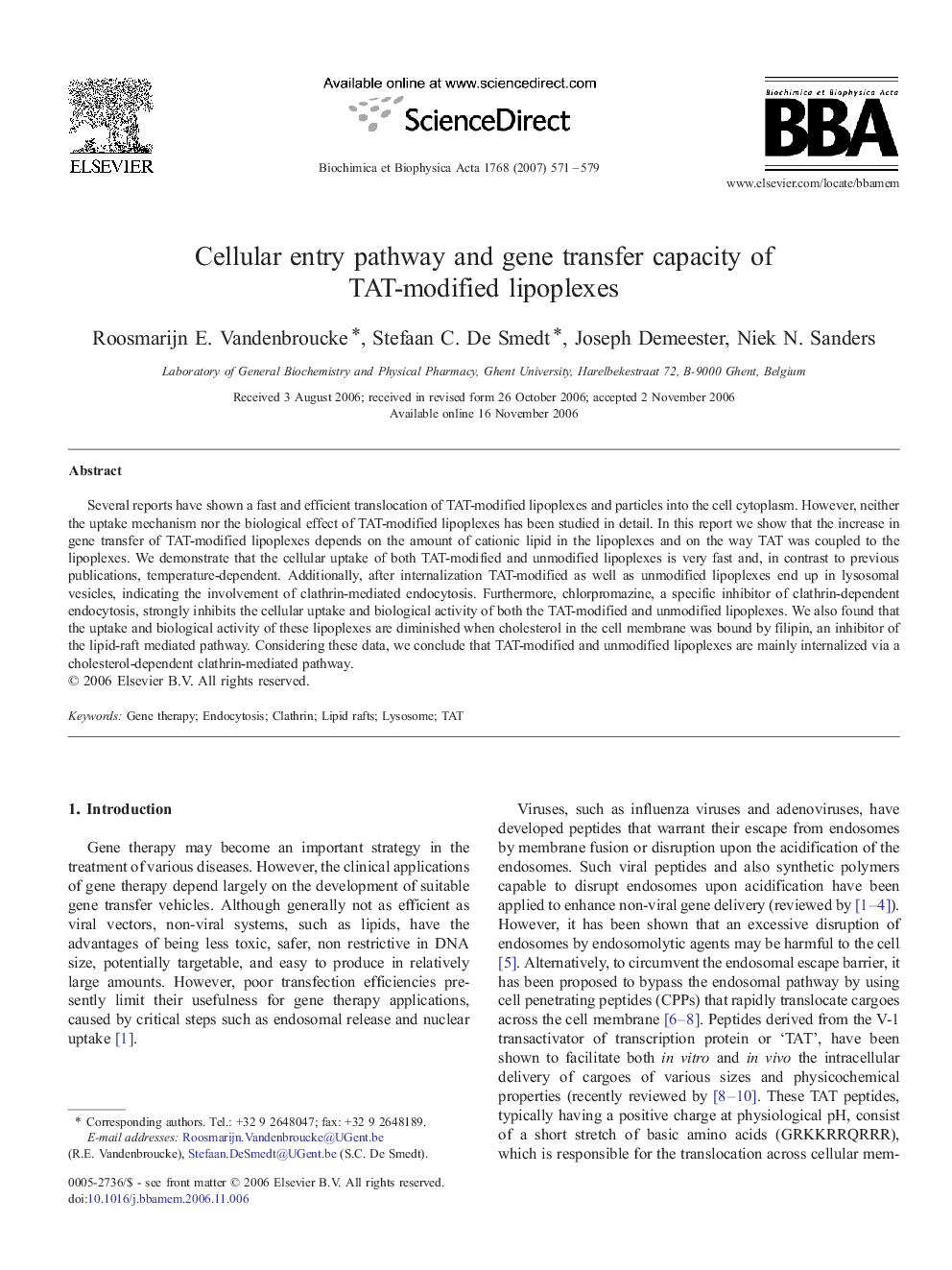| Article ID | Journal | Published Year | Pages | File Type |
|---|---|---|---|---|
| 1945856 | Biochimica et Biophysica Acta (BBA) - Biomembranes | 2007 | 9 Pages |
Several reports have shown a fast and efficient translocation of TAT-modified lipoplexes and particles into the cell cytoplasm. However, neither the uptake mechanism nor the biological effect of TAT-modified lipoplexes has been studied in detail. In this report we show that the increase in gene transfer of TAT-modified lipoplexes depends on the amount of cationic lipid in the lipoplexes and on the way TAT was coupled to the lipoplexes. We demonstrate that the cellular uptake of both TAT-modified and unmodified lipoplexes is very fast and, in contrast to previous publications, temperature-dependent. Additionally, after internalization TAT-modified as well as unmodified lipoplexes end up in lysosomal vesicles, indicating the involvement of clathrin-mediated endocytosis. Furthermore, chlorpromazine, a specific inhibitor of clathrin-dependent endocytosis, strongly inhibits the cellular uptake and biological activity of both the TAT-modified and unmodified lipoplexes. We also found that the uptake and biological activity of these lipoplexes are diminished when cholesterol in the cell membrane was bound by filipin, an inhibitor of the lipid-raft mediated pathway. Considering these data, we conclude that TAT-modified and unmodified lipoplexes are mainly internalized via a cholesterol-dependent clathrin-mediated pathway.
